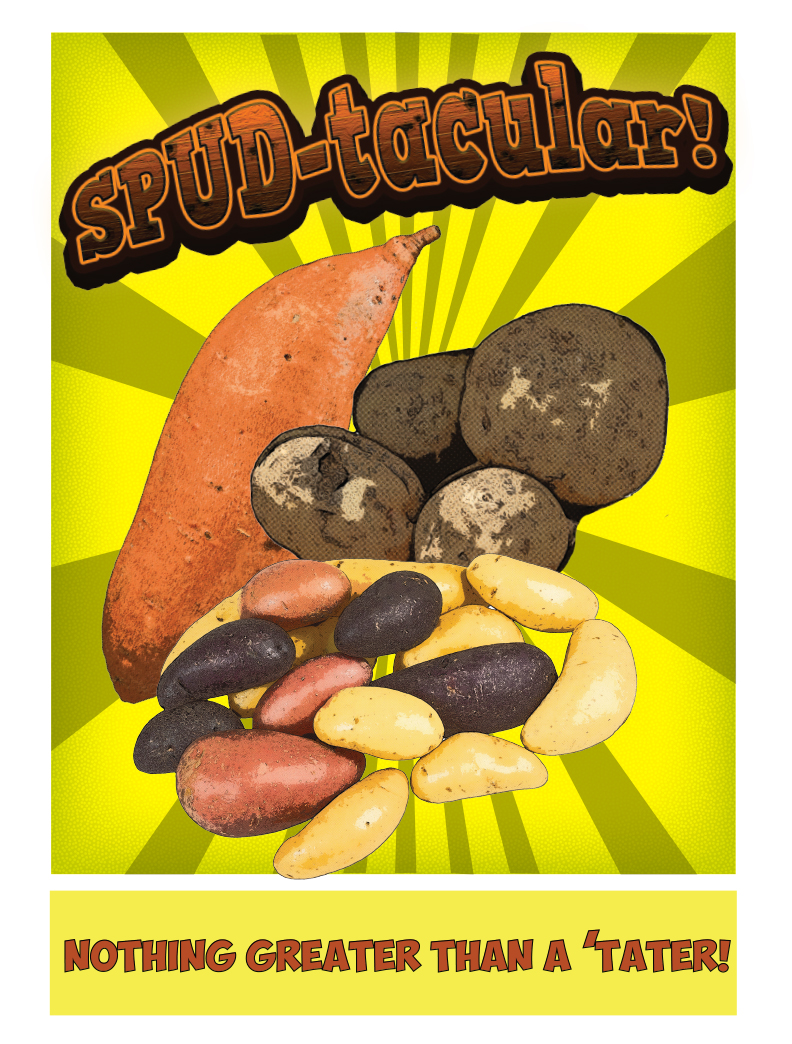SPUD-tacular!

Potato Recipes
Click on the name of the below recipes to download complete recipe, and meal crediting information.
The below recipes were contributed by Connecticut Food Service Directors.*
*Recipe and Meal Contribution Review completed by Put Local on Your Tray. SFAs must check the crediting information for accuracy prior to including the item in reimbursable meals.

Harvest Entree Salad With Turkey
Rainbow Fingerling Potatoes (1)
If you have a recipe using this product that was successful in schools and would like to share please send it to us!
Fun Potato Facts
In the Past: Potatoes are some of the oldest cultivated crops, dating back to as early as 800-500 BC where they were first cultivated in Peru and Bolivia. When potatoes were first cultivated, there were as many as 3,000 different varieties of potatoes! At the beginning of the 16th century, Spanish explorers discovered that potatoes prevented scurvy and began to carry them on their ships. Shortly after, potatoes were introduced to Europe by the Spanish, and Italians and Germans began to grow and consume it. It was only in the 19th century that the potato began to be cultivated on a large scale in the United States!
In the Soil: Potatoes are in the family Solanaceae, related to tomatoes and eggplant! You can tell they are related by looking at their small flowers with five petals. Potatoes are easy to grow as long as they have full sun, moderate temperatures, and light, rich, acidic, well-drained soil. They are root vegetables, so you pick the potato underground, and their stems aboveground can grow to a height of 3 feet. Of the 3,000 different varieties of potatoes, we cultivate about 100 of them today for human consumption.
In the Body: Potatoes are an excellent source of Potassium and Vitamin C. So, if you’re feeling under the weather or have cramps - have a serving of local potatoes! They also contain vitamin B6, copper, niacin, magnesium, iron, and folic acid.
In the Kitchen: Dispose of any potato more than half of which is green, as it will be bitter and inedible. Scrub the potato well if it is to be cooked with its skin, and remove the eyes and any traces of green. It’s not necessary to peel early or new potatoes; simply cook them as is after having removed any green flesh. Cook it as soon as you cut it so they don’t turn brown! Serve them mashed, baked, boiled, steamed, fried. They are versatile in the kitchen for so many kinds of recipes.
In Connecticut: Local farmers grow all different kinds of potatoes in Connecticut! Try bright orange sweet potatoes, vibrant purple potatoes, long and tiny Austrian Crescent potatoes, or even All Red potatoes which are as pink as can be! Potatoes are started to be harvested in mid-July, and can be stored throughout the winter if kept in a cool, dark, dry, well-ventilated place to maintain their freshness.